Classical Music - Part 32 - February, 2002
Jason Serinus
| Ratings: | ||
| Extraordinary | ||
| Good | ||
| Acceptable | ||
| Mediocre | ||
| Poor |
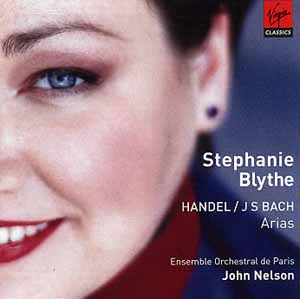 |
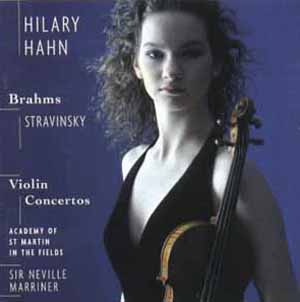 |
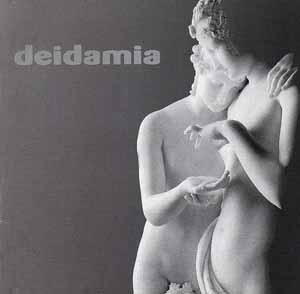 |
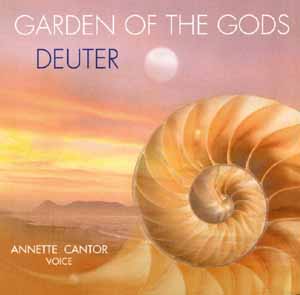 |
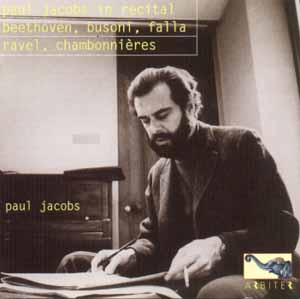 |
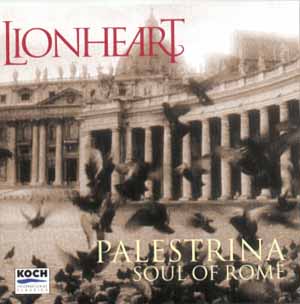 |
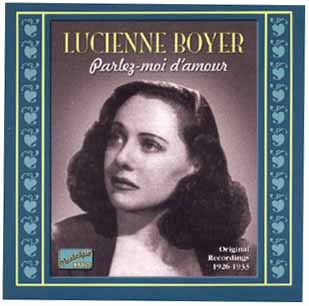 |
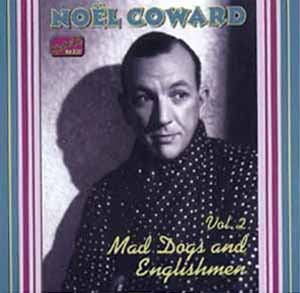 |
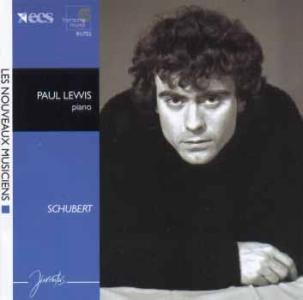 |
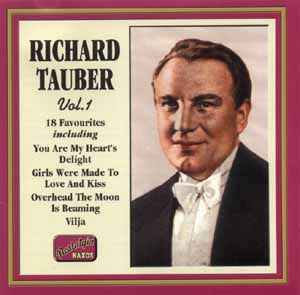 |
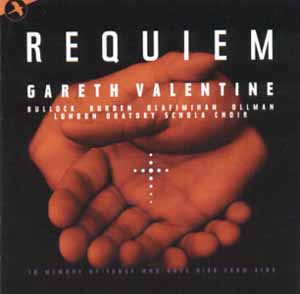 |
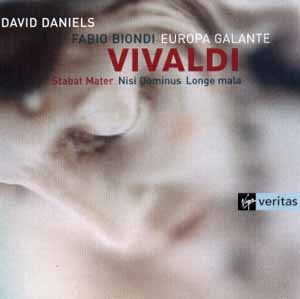 |
FOCUS ON COUNTERTENOR DAVID
DANIELS:
VIVALDI: STABAT MATER, NISI DOMINUS, LONGE MALA � DAVID DANIELS � EUROPA
GALANTE, FABIO BIONDI, CONDUCTOR � VIRGIN VERITAS 7243 5 45474 2 3
Performance:
![]()
![]()
![]()
![]()
![]()
Sonics: ![]()
![]()
![]()
![]()
HANDEL & BACH ARIAS � STEPHANIE
BLYTHE � JOHN NELSON, CONDUCTOR � VIRGIN CLASSICS 7243 5 45475 2 2
Performance:
![]()
![]()
![]()
![]()
Sonics: ![]()
![]()
![]()
![]()
Countertenor David Daniels possesses a unique, highly androgynous voice that
is remarkably beautiful, amazingly flexible, and quite affecting. The artist�s
remarkable gifts are abundantly displayed in two recent recordings. The first
features Daniels in three of Vivaldi�s sacred works; the second, a debut
recital by mezzo-soprano Stephane Blythe, offers the countertenor in an
extended Handel operatic duet with the mezzo.
Daniels� versatility astounds. The Stabat Mater, commissioned in 1712 as
Vivaldi�s entryway as maestro di coro for Venice�s Ospedale della Piet�, was
likely the composer�s first sacred work. Sparse in instrumentation, its somber
mood and simplicity of line fit the sorrowful text. The piece sits low in
Daniels� range, allowing abundant opportunity to experience his marvelous
legato, sensitive phrasing, and rounded lower notes. Occasionally Daniels�
runs sound a bit too happy to convince that Mary is weeping for her son, but
the performance by and large succeeds.
Once we�ve paid for our sins, its on to fun time. The Nisi Dominus,
commissioned in 1717 for a young girl, is far more lively and uplifting.
Scored for a small orchestra that includes organ, the work sits higher in the
voice where Daniels� instrument seems happiest. There�s a long held note on
the word �doloris� that my listening companion called �so beautiful that it
would justify buying the album.� Daniels� phrasing is supremely musical. He
does a specially fine job with the unusual rhythms and pauses of the �Sicut
sagittae,� offers a relaxed, supremely beautiful sound in the happy �Beatus
vir,� and produces perfectly placed runs that will leave many singers jealous
with envy.
The disc concludes with the 1725 motet Longe mala, a virtuoso showpiece whose
wide operatic flights offer Daniels countless opportunities to amaze. The
voice is a bit white and lacking in requisite fury � one can only imagine what
mezzo-soprano Cecilia Bartoli could do with this music � but Daniels�
performance is miraculous nonetheless. Imagine witnessing the belle of the
ball, wearing the dress that gets everyone�s attention until someone else
comes on the scene dressed even more fabulously. Except, in this case, the
person wearing the first gown is a man, which is another story entirely.
Those encountering Daniels for the first time might have difficulty figuring
out who is the woman in his Handel duet with Stephanie Blythe. Their voices
blend perfectly in �Madre!... Son nata a lagrimar� from Giulio Cesare in
Egitto, with Blythe�s masculine-sounding low notes and more sharply delineated
voice contrasting with Daniels� whiter instrument. Daniels unquestionably
offers the more emotionally expressive, sensitively shaded singing of the
pair. This performance, like the Vivaldi, is a must hear.
The remainder of the Blythe disc contains, by Handel, �Ombra mai fu� (Serse),
�Where Shall I fly� (Semele), and �Al lamp dell-armi,� �Aure, deh, per piet�,�
and �Priva son d�ogni conforto� (Giulio Cesare). The Bach contributions
consist of �Erbarme dich, mein Gott� and �K�nnen Tr�nen meiner Wanger� (Mattth�us
Passion); �Von den Stricken meiner S�nden� and �Es ist vollbracht!�
(Johannes-Passion), the latter with the distinguished J�r�me Hanta� on viola
da gamba; and �Agnus Dei� (Messe in B Minor). While not for an instant
questioning the singer�s technical mastery, it must be pointed out that there
are others on record who touch the heart deeper in this repertoire.
DEUTER: GARDEN OF THE GODS � ANNETTE CANTOR, VOICE � NEW EARTH RECORDS
Performance:
![]()
![]()
![]()
![]()
![]()
Sonics: ![]()
![]()
![]()
![]()
![]()
�And the only miracle that is possible is to enter this garden of Eden again,
to become childlike, to allow nature its flow. Don�t block it, don�t stand in
the way... You are part of the continuous mystery that is happening.�
With this quote from the late spiritual teacher Osho, the intention behind
this album becomes clear. Happily, intention is realized.
This album is dedicated to �everybody who has the courage to go a step in the
direction of love, silence and truth to make this place a Garden of the Gods.�
Chaitanya G. Deuter, a treasured presence among New Age composers, wrote these
eight tracks to take advantage of the qualities of �love for life and a
lightness� that distinguish Annette Cantor�s soothing voice. He also wished to
�explore new territory� in his musical world by creating a unique, idyllic
landscape.
Deuter�s eight tracks mix Cantor�s healing voice with his playing of guitar,
flute, synthesizer, and drums. Occasionally, as in the vaguely Native American
�Felsen im Licht,� Deuter�s own voice is heard. Some of the pieces were
composed in advance; others emerged spontaneously, with layers of
instrumentation added later on. The results are very beautiful.
The sound quality on this album is excellent. There�s a lot of intelligence
involved in writing engaging, enveloping music that conveys deep spiritual
intention. This music simultaneously draws you in, lifts you up, and helps you
feel whole and complete. It becomes your friend. You will feel blessed to use
this disc for meditation, healing, relaxation, or as background for massage.
If you can�t find it in your usual outlets, call 1-800-245-4482.
BRAHMS & STRAVINSKY VIOLIN CONCERTOS � HILARY HAHN � ACADEMY OF ST. MARTIN
IN THE FIELDS/MARRINER � SONY SK 89649 or, in single-layer SACD, SS 89649
Performance:
![]()
![]()
![]()
![]()
![]()
Sonics: ![]()
![]()
![]()
![]()
Hilary Hahn has given us a recording for the ages. The 21-year old violinist
possesses a marvelous technique and a luscious, sweet tone that she employs in
service to the emotional core of the music at hand. The result is some of the
most vibrant, energized, and moving playing to be heard on today�s concert
stage.
Aligned with Brahms� dramatic orchestral introduction, Hahn launches into his
concerto�s first passages with vigor. Then, as her arpeggios lead to the
violin�s first inward statement, her sound becomes increasingly tender and
loving, as though her instrument is reproducing the sound of a heart opening
in song. It is an extraordinary experience, this transition from an almost
masculine introduction � the Chinese term �yang� is more accurate � to a more
feminine (�yin�) vulnerability and sweetness that communicate feelings better
expressed in tender touches and tears than in prose.
Hahn�s clarity and directness increase in the work�s tender central Adagio.
Aided by close miking, her tone grows rounder and more intense as Brahms moves
deeper into his emotional core. One of this composer�s great strengths is his
honesty, and Hahn is right there with him. Her sound is gorgeous, produced in
a manner that draws attention to the music rather than to the technique
itself.
The violinist�s success is due in no small part to her timing. Nothing seems
either rushed or unduly drawn out. There is no enervating lingering here, as
in the recent release by the silvery-toned Kyung Wha Chung (with Sir Simon
Rattle conducting the Berlin Philharmonic) on an excessively atmospheric EMI
disc.
Heifetz�s stunning speed and breathtaking technique (with Reiner conducting
the Chicago Symphony on the famed 1955 RCA Living Stereo recording) may be
absent from Hahn�s finale. But what Heifetz communicates via sheer virtuosity
and intensity Hahn shares through irresistible beauty of tone and phrasing.
Heifetz may bowl one over, but Hahn touches in ways that many will find more
meaningful.
The Stravinsky concerto, a different creature entirely, receives equally
wonderful treatment. The first movement Toccata (played in 4:51, a timing
close to what the composer indicated) bubbles along with an almost circus-like
whimsy. Hahn�s two inner movement arias are far more sober; the second is
marked by a lyricism and pathos that make the joy of the final Capriccio,
played with rousing rhythmic vitality, all the more fetching. On a competing
1999 EMI disc, Maxim Vengerov (with Rostropovich conducting the London
Symphony) plays the first movement at a much slower 6:19; even the final
Capriccio clocks in at 40 seconds slower. The performance may have more
weight, but Hahn dances and emotes in ways far more appropriate for
Stravinsky�s writing.
While Marriner�s conducting seems rather ordinary, it certainly affords Hahn
the breathing space she needs to achieve greatness.
This disc comes in two versions: regular 2-channel CD, and a single-layer SACD
playable only on SACD players. After hearing the SACD version at CES, I must
say that it is far more effective soncially. On standard CD, the orchestra�s
distinctly second fiddle status seems due in part to the recording technique,
which places Hahn front and center. In this format, Sony�s engineers cannot
approach the tonal richness, soundstage width, and natural balance of the
46-year old Heifetz/Reiner Living Stereo wonder (recorded with only two
mikes). But at least Sony�s stamdard CD offers far more color (and less
reverb) than EMI�s outing with Chung and Rattle.
G.F. HANDEL: DEIDAMIA � BREWER CHAMBER ORCHESTRA, PALMER SINGERS � RUDOLF
PALMER, CONDUCTOR � ALBANY RECORDS TROY 460 (3 CDs)
Performance:
![]()
![]()
![]()
![]()
Sonics: ![]()
![]()
![]()
![]()
A major addition to the catalogue, Handel�s final opera has just received its
first recording, a period instrument outing featuring an admirable cast.
At the time of Deidamia�s 1741 London premiere, Italian opera was considered
pass�. One wonders if public disinterest � the work achieved only three
performances before it closed and Handel abandoned opera for oratorio � was
due in part to its convoluted libretto.
The plot revolves around the prophecy that Greece will achieve victory over
Troy only if the warrior Achille joins their efforts, knowing he will die as a
result. As the opera begins, Princess Deidamia disguises her beloved Achille
as the maiden �Pirra� so that he will not be conscripted. Ulisse, pretending
to be �Antiloco,� shows up hunting for Achille. In the process, Ulisse feigns
love with nearly every woman (and every man disguised as a woman) in sight,
leading to multiple jealousies, 28 impassioned arias, and a slew of seething
recitative. In the end, Achille�s drag cannot conceal his macho warrior
spirit. In a farewell mixing tears and triumph, Achille marries Deidamia and
sets off to battle.
In Handel�s time, it seemed not the least bit unusual for a soprano to sing
the role of a male warrior disguised as a woman; for that soprano to love
another soprano; and for the warrior�s disguise to be discovered by a castrato
� a boy intentionally castrated in order to sing the high vocal line in Church
choirs restricted to males � to play the role of a testosterone-laden male
equally attracted to sopranos playing women and men in women�s clothing. While
this may strain the credulity of the literal minded, the beauty of the music
transcends such absurdities.
Thanks to Rudolf Palmer�s fine conducting, the Brewer Chamber Orchestra,
Palmer Singers and soloists perform with enviable vigor and transparency. The
vocal standout is soprano Julianne Baird as Deidamia. Her unique timbre and
purity on high, married to an enviable range of expression, make Deidamia�s
love, jealousy, rage, and suffering credible and moving. Baird is especially
marvelous in her many heart-touching moments, and in the aria �Nasconde
l�usignol� in which she sweetly imitates a lark.
Soprano D�Anna Fortunato is almost as good, rising to the occasion in �Si,
m�appaga.� Everyone else �soprano Brenda Harris as Ulisse (originally a
castrato role), the excellent bass John Cheek as the believably aged King
Lycomede, lighter soprano M�ire O�Brien as Nere, and attractively-voiced
baritone Peter Castaldi in the bass role of Fenice -- copes admirably with the
florid writing, occasionally concentrating more on technique than emotion.
(One can only imagine what Marilyn Horne or Cecilia Bartoli might do with some
of these arias). Minor reservations aside, there is much beauty here, and much
to be grateful for.
PAUL JACOBS IN RECITAL � (ARBITER 130)
Performance:
![]()
![]()
![]()
![]()
Sonics: ![]()
![]()
![]()
Pianist Paul Jacobs holds the regrettable distinction of being the first major
classical artist whose premature death from AIDS received widespread
publicity. That his death, like Rock Hudson�s, contributed greatly to making
public discussion about AIDS acceptable is due to his importance as former
pianist and harpsichordist of the New York Philharmonic.
This CD finally makes available excerpts from live recitals performed by this
lamentably under-recorded artist. A follow-up to Arbiter�s reissue of Jacobs�
famed Busoni recording for Nonesuch (Arbiter 124), the disc is derived
primarily from the New York Public Library�s tapes of Jacobs� concerts given
at Brooklyn College from 1972-1974.
Jacobs is especially known for his championing of contemporary music. While
the recital offers the pianist in Busoni�s Preludio, Fuga e fuga Figurata,
Falla�s Fantasia Baetica, and Ravel�s Menuet sur HAYDN and wonderful Valses
nobles et sentimentales, over half its space is devoted to Beethoven�s Piano
Sonatas No. 21 in C, Op. 53 �Waldstein� and Piano Sonata No. 7 in D, Op. 10/3.
As an encore, Arbiter includes a 1978 home recording of Chambonni�res� short
Chaconne in F, played on a seemingly huge, highly resonant harpsichord. The
sound, though hardly state-of-the-art, has been remastered to satisfactory
standards.
When compared to Beethoven specialist Wilhelm Kempff's late stereo recording
of the �Waldstein� (in an unbeatable pairing with the �Moonlight,�
�Appassionata�and �Path�tique� sonatas on DG 447 404-2), Jacobs rips through
the Allegro con brio, his stunning, mile-a-minute technique threatening to
overwhelm the poetry. The short Introduzione: Adagio molto is quite fine,
however, and the marvelous Rondo sings beautifully, ending the sonata
triumphantly. The brochure includes an invaluable extended interview with
Jacobs, conducted in 1976.
LIONHEART
�
PALESTRINA: SOUL OF ROME
� KOCH INTERNATIONAL CLASSICS 3-7513-2 III
Performance:
![]()
![]()
![]()
![]()
![]()
Sonics: ![]()
![]()
![]()
![]()
![]()
Renaissance polyphony frequently induces an elevated, almost mystical state of calm, peace and reverence in the listener. The almost alchemical blend of multiple voices moving in different directions up and down the scale while forming a common, prayerful voice may have irked the Pope at the time, who felt that words of masses could not be clearly understood, but it rarely fails to open the hearts of those less concerned with the literal.
Until now, my favorites in this genre have included The Tallis Scholars� Western Wind Masses (Gimmel), Chanticleer�s Palestrina (Teldec), and, from the brink of the Renaissance, The Hilliard Ensemble�s Dunstable motets (Virgin). To these is joyfully added Lionheart�s compilation of 16th century music by Giovanni Pierluigi da Palestrina, his compatriot Constanzo Festa, and Palestrina�s pupil, Tom�s Luis de Victoria.
The ensemble sings with an enviable, almost angelic smoothness. Every note is formed with attention, every word filled with a belief in the transcendent sanctity of the sonic tapestry. Well-recorded in New York�s Ascension Church, the group�s resonant richness makes it hard to believe that only six voices are involved. That the fourteen selections are similar in tempo and purpose adds to their soul-touching nature. Whether listened to in silence or by candlelight, or used as background for massage or meditation, this is a wonderful disc.
In April and May 2002, Lionheart is touring the United States in joint concerts with the superb women�s a cappella quartet, Anonymous 4. Please look for the forthcoming interview with members of Lionheart at Secrets.
SCHUBERT: SONATA NO. 19 IN C MINOR, D. 958; SONATA NO. 14 IN A MINOR, D. 784 � PAUL LEWIS, PIANO � HARMONIA MUNDI HMN 911755
Performance:
![]()
![]()
![]()
![]()
Sonics: ![]()
![]()
![]()
![]()
Two of Schubert�s late great piano sonatas receive fine performances in this commendable mid-price �Les Nouveaux Musiciens� release.
Shortly before he died of syphilis, Franz Schubert (1797-1828) wrote a slew of great works that reflect deepening sadness over his impending demise. Amongst these is the final Winterreise song cycle of 1827, the three final piano sonatas of 1828, and the posthumous cello quintet, whose remarkable adagio speaks of the other side. The earlier Sonata No. 14, written in 1823, seems to presage the pain of this late period.
Lewis, a relatively young British pianist who regularly coached with the great Alfred Brendel before winning Second Prize in the 1994 World Piano Competition in London, certainly knows how to get inside these works. Brendel�s early analogue performance of the C Minor (in a Philips Duo set 438 703-2 that also includes D. 959, D. 960, and three Impromptus D. 946) features a considerably faster, extremely intense first movement Allegro and a somewhat slower, quirky second movement Adagio; Lewis� less driven tempi produce a sweeter and less driven performance. On a few occasions, one sense a note or scale that would benefit from a bit more concentration, but on the whole, the renditions are quite moving.
The sonics, while not ideal, are certainly superior to the Brendel transfer. Brendel is captured up close, in a CD transfer that lacks the air and depth that the music and its instrument require, while Lewis is captured from a distance, with the midrange resonance the Brendel lacks, albeit with more reverb than one would ideally wish.
REQUIEM � GARETH VALENTINE � JAY RECORDS CDJAY1358
Performance:
![]()
![]()
![]()
![]()
![]()
Sonics: ![]()
![]()
![]()
![]()
![]()
The sense of hope and peace at the heart of this lovely Requiem in Memory of Those Who Have Died of AIDS lingers long after its conclusion. Distinguished by a continual flow of beautiful, gentle melodies, the work�s welcome air of compassion and consolation makes for a moving, life-enriching experience.
British composer/conductor Gareth Valentine was able to secure London�s famed Abbey Road Studios and top-flight performers for the recording because the disc raises money for AIDS charities. For every recording sold abroad, �1 goes to Crusaid; each US sale generates $1 for Broadway Cares.
One comes away from this performance with the sense that these musicians are performing, not to fulfill contractual obligations, but because they believe in this music�s message. There is a sincere, personal quality to this recording that makes one feel that these folks are singing and playing for us.
Valentine�s lover Mike attended the Requiem�s first performance in Southwark Cathedral, London, on May 15, 1993. Mike was gravely ill, but managed to take his first and last Communion. After he consumed the wafer and wine that signify Christ�s body and blood, Mike asked Gareth, �Will I be alright now? Gareth answered yes. Mike died three months later, with his family and friends at his bedside.
�As a Christian, I truly believe that he is alright now,� writes Gareth in the liner notes. The sense of peace that fills his music suggests that his faith is real.
The Requiem has already received performances in Melbourne, Boulder, London, and Washington, D.C.; Dublin is in the works. Hopefully this recording will spark many more performances.
Valentine, TER/Jay label director John Yap, and Bill Occleshaw engaged the performers. The London Oratory Scholar Choir is one of London�s leading boy�s choirs, and adds a beautiful innocence to the performance.
All the adult soloists are world-class. English soprano Susan Bullock won the prestigious Kathleen Ferrier Award in 1984, has sung lead roles with many of the world�s major opera companies and conductors, and has recorded The Mikado and Kurt Weill�s Street Scene for TER/Jay. The handsome American tenor William Burden and English soprano Tinuke Olafimihan also boast impressive credentials in the classical and musical theater repertoire. American baritone Kurt Ollman, who sang in Leonard Bernstein�s recording of West Side Story and in the original New York performance of The AIDS Quilt Songbook, is known for championing the work of such contemporary composers as Rorem, Gordon, Danielpour, and Torke.
Valentine, who studied voice with Sir Peter Pears in the late 70's, has just released a set of Christmas carols on England�s Herald label. Planning to specialize in liturgical writing, he is currently composing a Missa Brevis.
Mainly, however, Valentine writes for musical theatre in England. His history includes involvement in almost 25 West End productions as musical director, arranger or performer. Credits include composing all the dance music for Kiss Me Kate (Royal Shakespeare Company), and London performances of Kiss Of The Spiderwoman, Cabaret, Company 42nd Street, Chicago (with Chita Rivera), Miss Saigon, Merrily We Roll Along, and currently Kiss Me Kate (Broadway principal cast).
Scores of AIDS-related compositions have appeared in the last fifteen years. Most layer simple, sweet melodies with a mass-market sentimentality perfectly suited for a TV miniseries. Although it is very �popular� in its melodic invention, Valentine�s Requiem eschews saccharine sweetness and cheap effects. Filled with one wonderful melody after another � the �Offertorio� could easily stand on its own as a song � it offers sufficient variety to remain consistently absorbing. Most important, it leaves you with a sense of gratitude for life.
THE NAXOS NOSTALGIA SERIES
Bargain label Naxos continues to enrich us with outstanding reissues of lighter fare. In the latter category, their Nostalgia series, mastered by producer David Lennick, wins high marks for its quality. Among discs of Fred Astaire, Frank Crumit, Gracie Fields, John McCormack, Paul Whiteman, Bing Crosby, Maurice Chevalier, the Paul Whiteman Dance Band, Cole Porter, Marlene Dietrich, and Charles Trenet, those by Richard Tauber, No�l Coward, and Lucienne Boyer are the subject of this review.
RICHARD TAUBER FAVOURITES VOL. 1 � NAXOS 8.120513
Performance:
![]()
![]()
![]()
![]()
![]()
Sonics: ![]()
![]()
![]()
No tenor better captures the Austro-German spirit of the inter-war era than the irreplaceable Austrian tenor Richard Tauber.
As great as were Tauber�s interpretations of opera and art song � not until Fritz Wunderlich did the world experience another Mozart tenor blessed with such a winning combination of grace and beauty � he is perhaps most remembered as the only singer capable of turning sheer schmaltz into high art.
Tauber was born in 1891 in Linz, the illegitimate son of a light soprano and actor. Given that his maternal grandfather was a theater director, it is fair to say that the theater was in his blood.
Although he originally planned to become a conductor, Tauber soon gravitated toward singing, making his debut as Tamino in Mozart�s Die Zauberfl�te at the age of 22. From 1915 to 1922 he was a principal tenor with the Dresden Opera, with guest appearances in Berlin, Vienna and other major European venues. The Vienna State Opera got him in 1922, the Berlin Staatsoper from 1925 until 1932.
Like many of his compatriots, Tauber left Germany during WWII, becoming a British citizen in 1940. Although his best years were behind him, he continued to record and sing in a slightly dusky voice whose diminished range was balanced by a continuous well of charm. Shortly before his death from lung cancer in 1948, Tauber made a famous Covent Garden appearance as Don Ottavio in Mozart�s Don Giovanni, managing to perform with only one lung.
Richard Tauber delighted in his voice as much as he loved the act of singing. Music seems to flow from his throat in a stream of unparalleled joy; there is an ease to his musicianship that remains unparalleled. Although he lacked a high C, his B was absolutely solid, the voice virile and firm throughout. His many gifts included the ability to sing sotto voce, floating high notes in incomparable sweet falsetto.
The tenor first met operetta composer Franz Leh�r in 1924, when he was chosen to perform in Lehar�s Frasquitta. His subsequent Leh�r roles included Paganini (1925), Zarewitsch (1927), Friederike (1928), and Das Land des L�chelns (1929). After awhile, the partnership seemed so indispensable that Leh�r began to call his new arias for the tenor �Tauberlied.�
In addition to offering eight Leh�r tracks recorded 1927-1939 (two of which are conducted by Leh�r), this marvelous disc includes ten other recordings of lighter fare. Among them are treasured versions of Stolz�s �Im prater bl�hn wieder die b�ume,� Heuberger�s �Im chambre separ�e,� Romberg�s Serenade from The Student Prince (recorded in London and sung in English), Strauss� �Tales from the Vienna Woods� conducted by Erich Wolfgang Korngold, and Sieczynski�s �Wien, du stadt meiner tra�me.� The accompaniments are as priceless as the singing. Once you�ve had your fill � for this reviewer, an impossibility -- comparisons with the great soprano Elisabeth Schumann�s charming contemporaneous renditions of several of these works will offer further delight.
NO�L COWARD: A ROOM WITH A VIEW � NAXOS 8.120529
NO�L COWARD: MAD DOGS AND ENGLISHMEN � NAXOS 8.120559
Performance:
![]()
![]()
![]()
![]()
![]()
Sonics: ![]()
![]()
![]()
No�l Coward, in some ways the English equivalent of America�s Cole Porter, was born in Teddington, Middlesex in 1899. Dubbed �the master� for his abilities as a playwright, lyricist, arranger, director, singer-actor, short story writer and attempted novelist, Coward�s work is distinguished by his occasionally wicked wit and penchant for satire.
Coward�s genius especially shone in his own performances of works for musical comedy. Here, his middle class, quintessentially English, intentionally mannered vocalism, at times proffered with a slight curl of the lip, underscored pretense by cutting right to � when not intentionally cutting through --the heart of his music.
Coward made his first stage appearance at theater school at age seven, with his actual theatrical d�but coming at twelve. At fifteen he was already writing and performing his own material. 1923 saw him co-starring with Gertrude Lawrence in Andr� Charlot�s London Calling. By 1925 he had five plays running simultaneously in London, including the revue On With the Dance. His 1929 Bitter Sweet, which ran first in London and then in New York, marked Coward�s entry into operetta; the work was filmed in 1933.
Volume 1 contains all Coward�s recordings from 1928-1931; Volume 2 extends through January of 1936. Most of the selections are by Coward, but we also offered, Vol. 1, Robin-Grainger�s �Love in Bloom� and Kern-Hammerstein�s �We Were so Young. The singer is occasionally joined by others, including the inimitable Gertrude Lawrence, for whom he wrote many of his greatest songs.
Vol. 1 includes an eight minute medley of selections from Cavalcade, Coward�s 1931 play that was filmed by Fox in 1933 and made into a multi-million dollar spectacle; another track from Cavalcade and the spoken prologue are also featured. The disc ends with a 9-minute medley of assorted Coward gems.
Vol. 2 begins with one of the master�s most famous songs, �Mad Dogs and Englishmen� from his Words and Music. Yet another 9-minute medley, which includes seven selections from Bitter Sweet, is among the gems of the second disc. If you ever have a need to feel just a little bit superior, Coward is the man to turn to.
LUCIENNE BOYER: PARLEZ-MOI D�AMOUR � NAXOS 8.120558
Performance:
![]()
![]()
![]()
![]()
![]()
Sonics: ![]()
![]()
![]()
One�s first thought upon hearing cabaret singer Lucienne Boyer�s signature song, her 1930 recording of Lenoir�s �Parlez-moi d�amour,� might be �What a curious, mousy little voice.� But feelings do change, and often quickly. Indeed, as the music continues, Boyer achieves a performance so touching, so absolutely right, that all reservations are swept aside.
In his liner notes, Peter Dempsey acknowledges that none of Boyer�s subsequent recordings made quite the impact of her Lenoir hit. Nonetheless, the disc�s 18 selections, recorded 1926-1933, establish that Boyer was a gifted cabaret singer of stature.
Boyer was born near Montparnasse, Paris, in 1901. After her father was killed in the war in 1914, she and her mother worked side-by-side in a French munitions factory, where her gifts as an entertainer were first recognized.
After the war, Boyer worked in a millinery while serving as a model for many avant-garde painters. Working her way into the theater, she became known for appearances in various cabarets and revues. Composer-guitarist Vincent Scotto penned several of her early successes, including �Youp et youp� and the poignant �Sans toi�, both contained in this anthology. Fame was achieved via Broadway appearances in 1927, after which Boyer returned to Paris to become an established figure in Parisian cabaret. Subsequent tours through the United States and South America in the mid-to-late 1930�s increased her fame.
In 1939, Boyer married her second husband, cabaret singer Jacques Pills. Though Pills later deserted her for Edith Piaf, Boyer�s career continued to flourish through the 1960s. As late as 1976, partnered by her daughter Jacqueline, Boyer sang at the Paris Olympia and made a number of TV appearances. She died in Paris in 1983.
Although Lucienne Boyer makes the artistic choice not to probe as deeply as Piaf�, hers is a distinctive instrument with the sound of Paris ringing through it. Her artistry, as representative of inter-war Paris as Tauber�s was of Austria and Coward�s of London, is sure to delight.
-
Jason Serinus -
Return to Table of Contents for this Issue.

